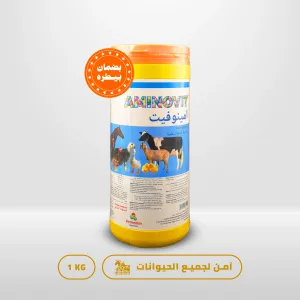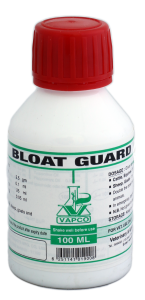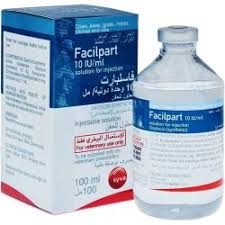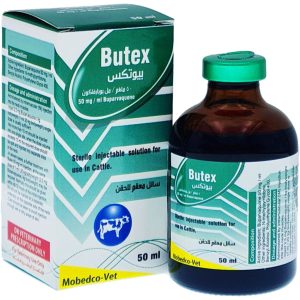
This shortcode is only available on vendor store pages.

الحصن الحصين البيطرية

This shortcode is only available on vendor store pages.
Butalex | Buparvaquone |veterinary treatment of Theileriosis
FOR VETERINARY USE ONLY
Butalex anti protozoal contains Buparvaquone for treatment of Theileriosis in cattle, camel, horses, sheep & goat let’s know more details
Composition:
One-milliliter Butalex contains
- 50 milligrams of Buparvaquone
Indications
Butalex injections antiprotozoal used to treat East Coast Tularemia, Australian Tularemia, etc… in livestock, which is caused by arthrosis from theileria Parva Butalex injection is an effective agent against the splitting phase and proplasm of the tularemia microbe.
It can be used during the disease’s incubation period, or when the medical signs are
The disease is visible.
The neighboring animals may have been infected, but the signs of disease are not visible on them.
Dosage and method of use
One injection, 2.5 milligrams or one milliliter of Butalex per 20 kilograms of body weight is usually sufficient, Severe cases may require an additional dose in the same amount of 1 mg per 20 kg of body weight This should be given within 48-72 hours after the first injection
How skin recommended to inject intramuscularly, inside the muscles of the neck.
To prevent contamination, the syringe and needle must be sterilized before use, and the injection must be done in a dry and clean skin area.
It should not be injected in one place of more than 10 milliliters, the prescribed amount must be divided and injected in different places of the neck.
And in severe cases that require A second injection.
This should be injected into a separate site, preferably on the opposite side of the neck
Precautions and Warnings
it should not be given intravenously or subcutaneously
side effects
Sometimes a localized edema is seen without pain at the injection site.
consumer protection
Livestock milk should not be used for human consumption during the 48 hours immediately following treatment
Livestock should not be slaughtered for human consumption within 42 days after the last injection daily
additional information
In severe cases of tularemia, relapses sometimes occur, requiring repeat treatment
Animals that are cured of the disease acquire symmetric immunity, but in spite of this, the occurrence of any future infection with strains of the Tilaria microbe that are not identical to the microbe The former will require additional treatment.
In the event of an epidemic of tularemia, spraying or immersing all susceptible animals should be promptly sprayed or immersed as an integral part of disease control measures.
It must also be taken into account the necessity of using a tick capable of the approved type, provided that it is in the correct concentration and that all animals are sprayed or immersed in it. As for the animals
The patient should spray by hand to reduce her stress to a minimum.
It is necessary to spray watering animals by hand, because the Qur’an that comes out of it may spread spirituality
Attention must also be paid to the possibilities and percussion of other infections carried by ticks. It is possible that the infection with tularemia
obscures the pathological symptoms of these diseases
Others, or latent infections may become apparent as the animal’s immune response is weakened Babesiosis and anaplasmosis need special treatment (Imzole is a registered trademark
It may need to be treated with chemicals as an adjuvant anti-bacterial to control the secondary infection.
Pay attention to nutritional matters as an aid to convalescence.
We should also not expose severely injured animals to stress, such as walking long distances or immersion..etc.
Anemia is the poorest blood that often characterizes tularemia, especially that caused by Tularemia Sergenti and Eilaria muonase, and for this reason, it must be taken into account to give a placenta to treat this anemia.
Tellarios has a severely depressing effect on the immune system, which is why Nagel recommends giving any vaccination until the animal is cured.
Storage :
Store Butalex away from light at a temperature below 25°C
Vendor Information
- Store Name: الحصن الحصين البيطرية
- Vendor: الحصن الحصين البيطرية
- Address: Riyadh
- No ratings found yet!
Aminovit Gulf | 9vitamins & 5minerals | perfect for Poultry,& livestock
Sold by الحصن الحصين البيطريةOut of stock
Surgical scalpel | handless scalpel for veterinary use
Sold by الحصن الحصين البيطريةOut of stock
DMG 6000 | Dimethylglycine | supplement for racing horses
Sold by الحصن الحصين البيطريةExcenel |ceftiofur veterinary |special for respiratory disease
Sold by الحصن الحصين البيطريةProduct Enquiry
Related Products
-
Facilpart 10 IU | oxytocin | help in dystocia in cattle
Sold by صيدلية البعادي البيطريةRated 0 out of 540 ر.س -
Tilosina 200 Ganadexil | tylosin | BRD solution | for cattle
Sold by صيدلية البعادي البيطريةRated 0 out of 530 ر.س -
BUTEX | BUPRAVAQUOE | Treatment OF theileriosis in cattle
Sold by الحصن الحصين البيطريةRated 0 out of 5100 ر.س – 180 ر.سPrice range: 100 ر.س through 180 ر.س -
Out of stock
-













Reviews
There are no reviews yet.